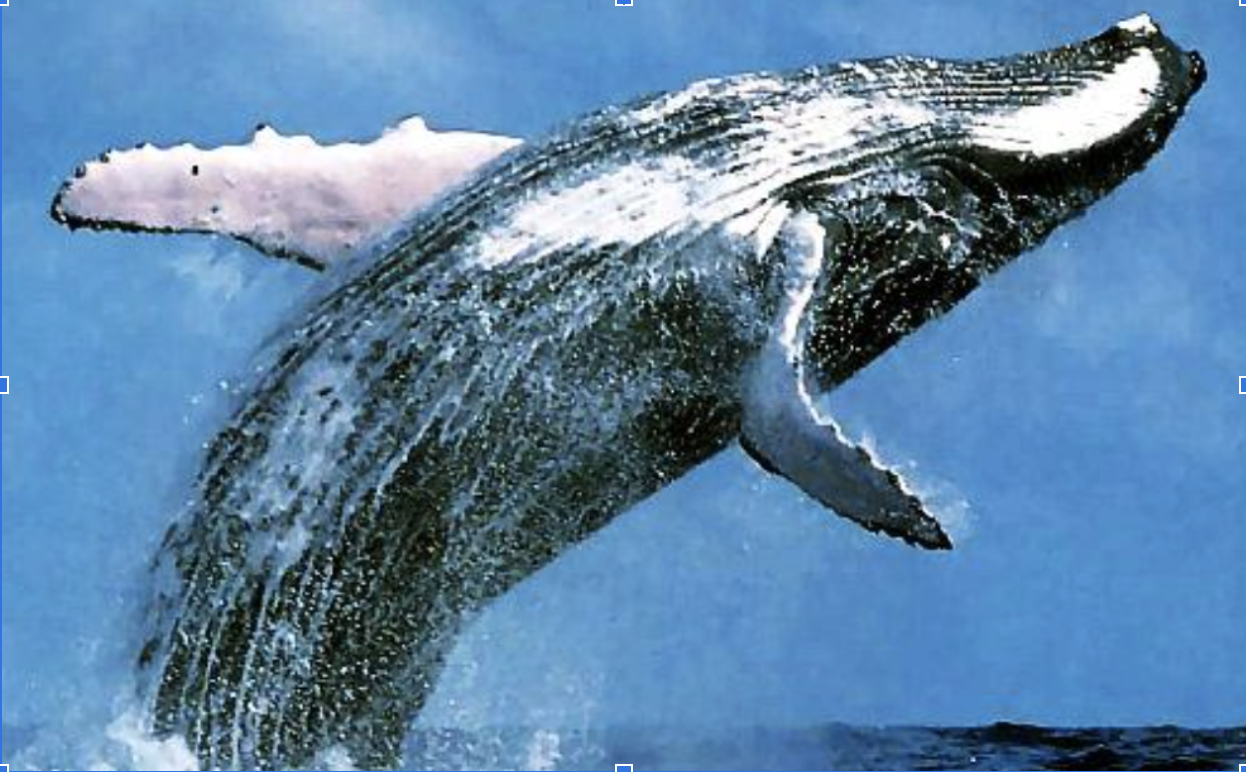One of the most beautiful species on earth, recognized as resilient travelers and extraordinary singers- the humpback whale. With origins tracing back 880,000 years ago around the southern hemisphere, the ancient animal has survived thousands of years of ice ages and changing ocean temperatures. Yet, in a single decade, off the coast of Brazil, the humpback whale’s vast population of 27,000 was reduced to less than 450. By almost being driven to the edge of extinction due to commercial whale hunting, the ancient animal faced its greatest challenge at the hands of humans, being the victim of hunting for blubber, oil, and countless parts to be sold or consumed in luxury. Yet, its story is not one of tragedy, but one of the few remarkable comeback stories that reminds us of the importance of hard work and resilience in the face of the direst situations.
The humpback whale can weigh up to 80,000 pounds and is 16 meters long, equivalent to a school bus. Its genus can be traced back to the late Miocene period, approximately 6 million years ago, and its vast population is distributed across oceans worldwide. They carry a distinctive body shape, with unique, knobby heads and long pectoral fins, which they use when undertaking the longest migrations of any mammal. Furthermore, the humpback whale is notorious for its ability to sleep while swimming, capture prey through bubbles, and produce complex, long, and intricate songs that can be heard from miles away. Sadly, the humpback whale is a beautiful and highly intelligent creature that has almost disappeared from the earth completely, becoming yet another extinct species that future generations will hear about from stories.
In the late 1800s, especially in areas of the Soviet Union, the Gulf of Maine, and large parts of the Southern Ocean, mankind discovered the economic potential of hunting humpback whales. The species carries not one but many different body parts that can be used for commercial projects- in fact, almost all of the whale is used for something. Their meat became consumed by other animals or used for human feed, the baleens (flexible plates in the whale’s mouth) for corsets, buggy whips, springs, umbrella ribs, and fishing rods, and their bones were also applied in various methods. However, the most sought-after element that drove mass hunts was the whale’s oil; lamps, candles, lubricating machinery and instruments, soaps, varnish, cosmetics, paint, margarine, and even textiles or in World War I trenches. In other words, the humpback whale was a very attractive and profitable product.
Behind each lamp or soap product is a painful and horrific hunt. Exploding harpoons were used to catch whales, which suffered for hours before being killed. Oftentimes, entire pods, including mothers and calves, would be targeted, knowing that they would not leave each other, disrupting the complex social structures and breeding patterns of the whales. On some ships, the humpback would be processed within a mere 30 minutes after its death. In the Soviet Union alone, within 30 years, this process would be repeated with 370,000 other humpbacks- oftentimes illegally. Eventually, at the very lowest point, the worldwide population was estimated to be around 5,000 individuals, and the species was in desperate need of recovery.
Extensive effort and remarkable hard work changed the tides.
In 1986, the global ban on whale hunting was implemented, a crucial turning point in wildlife history. With the aid of scientific research to monitor trends in population, international protection measures and established marine protection areas have intercepted vessels, setting strict regulations for hunters. Off the coast of Brazil, numbers rose from 450 humpbacks remaining up to 27,000. Near the southwest Atlantic and north Pacific, scientists and environmentalists have been able to return to pre-whaling digits. The miraculous comeback story helps serve justice to the wrongdoings of humans and revive a once doomed population.
Currently, the humpback whale’s status is becoming less and less endangered; however, in recent years, they have been losing numbers due to human activity. Unfortunately, entanglement in fishing gear, ship collisions, noise pollution, and climate change impact their food and safety. Like countless other species, the humpback has been endangered due to our actions. Though they continue to live, the same can not be said for innumerable others. Various forms of tigers, orangutans, elephants, turtles, rhinos, penguins, and thousands of other animals risk perishing at this very moment as you read this article.
The humpback whale’s story is a testament to human failure and redemption. As we celebrate its recovery, let it serve as a reminder to all other species before it is too late.
Bibliography:
“5 Impressive Facts about Humpback Whales You Didn’t Know!” CoastXP, 18 Apr. 2024, www.coastxp.com/facts-about-humpback-whales/.
Dana Wharf. “The Ultimate Guide to Humpback Whales.” Dana Wharf, 11 Dec. 2023, danawharf.com/blog/the-ultimate-guide-to-humpback-whales/.
“Mass Killing for No Reason? The Paradox of Soviet Whaling.” I, www.i-deel.org/blog/mass-killing-for-no-reason-the-paradox-of-soviet-whaling. Accessed 4 Mar. 2025.
SeaShepherdSSCS. “Protecting the Humpback Whale throughout Its Entire Life Cycle.” Sea Shepherd Conservation Society, 21 Jan. 2025, seashepherd.org/2024/07/12/protecting-the-humpback-whale-throughout-its-entire-life-cycle/.
Species List | Endangered, Vulnerable, and Threatened Animals | WWF, www.worldwildlife.org/species/directory?direction=desc&sort=extinction_status. Accessed 4 Mar. 2025.
Thompson, Dr. Kirsten. “Humpback Whales Have Made a Remarkable Recovery.” Time, Time, 16 May 2020, time.com/5837350/humpback-whales-recovery-hope-planet/.
Whale Products, www.coolantarctica.com/Antarctica%20fact%20file/wildlife/whales/whaling2.php. Accessed 4 Mar. 2025.

